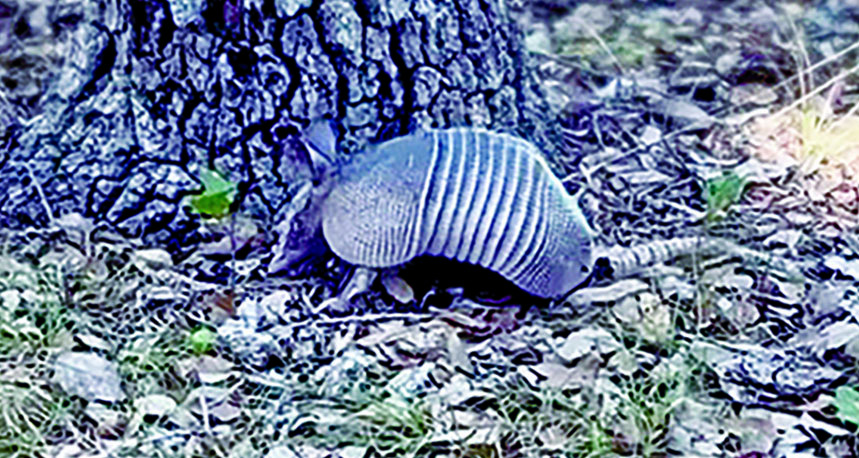AT THE TRAIL
Central Texas boasts a diverse ecosystem, and among its fascinating inhabitants is the nine-banded armadillo.
These small, armored mammals have become iconic figures in the region, showcasing their resilience and adaptability to the local environment. The state’s warm climate, varied terrain, and abundance of insects make it a haven for this relative of the sloth and the anteater to thrive.
One distinctive feature of armadillos is their hard, bony shell, which acts as protective armor. This shell consists of overlapping plates, offering flexibility while shielding them from potential predators. Interestingly, armadillos are the only mammals with such armor.
These nocturnal foragers have a keen sense of smell, enabling them to detect their prey – insects and invertebrates. Their strong forelimbs and sharp claws are well-suited for digging, allowing them to feed on ants, termites, beetles, and the occasional berries and small bird eggs.
With the disappearance of many large predators brought about by development, nine-banded armadillos have been able to travel as far north as Illinois and Nebraska.
Despite their endearing traits, armadillos can sometimes pose challenges for residents. They are known to dig burrows, creating extensive tunnel systems underground. While this behavior aids in their search for food, it can lead to issues like damaged lawns and gardens.
Being mostly hairless, armadillos are not adapted to cold weather. During the winter, they spend most of their days underground in their burrows. Armadillos do not hibernate. And nine-banded armadillos are not able to roll up into a ball like their South American counterparts, the three-banded armadillo.
In Central Texas, armadillos thrive in diverse environments mirroring the spirit of the Lone Star State. Their presence serves as a reminder of the delicate balance within ecosystems and the importance of preserving the natural wonders that make this region so special.
Come by The Cibolo Nature Center trails at 140 City Park Road and catch glimpses of these unique animals scurrying through the tall grass.

Courtesy photo

A nine-banded armadillo makes its way through acreage at the Nature Center.






Comment
Comments